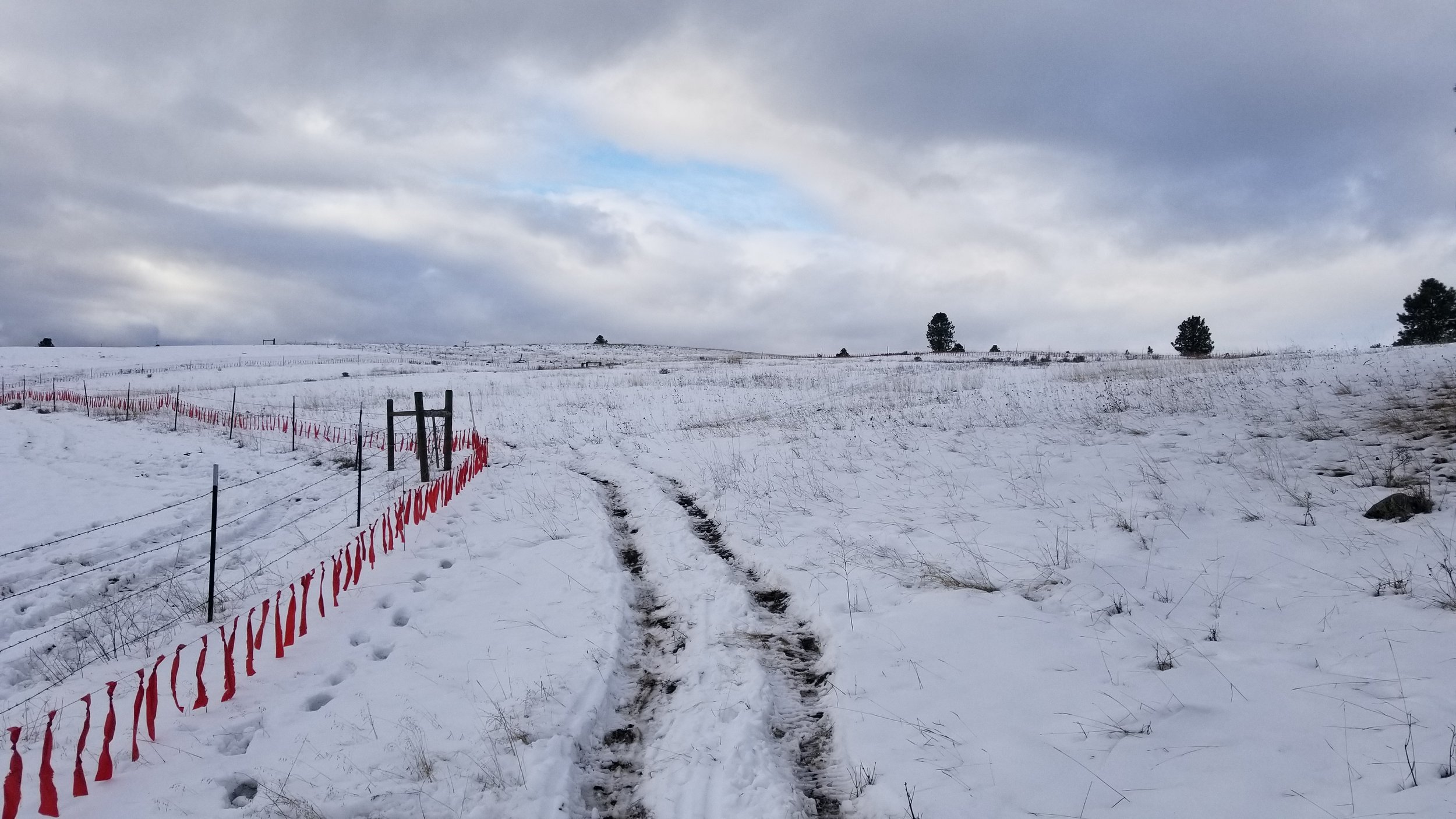
Wolf Conflict Prevention
Conflicts with wolves center around livestock. Cows, sheep, and other stock graze on public and private lands where wolves roam looking for food. While there is no silver bullet for preventing wolf-livestock conflicts, there are a number of tools and strategies that can keep livestock safe and wolves moving and finding natural prey.
Like with all large carnivores, avoiding attracting predators to a property is key. Livestock carcasses can draw wolves in. If livestock are nearby when wolves come to investigate a carcass, it can lead to conflict. Carcasses should be removed as quickly as possible. Ideally, they should be buried in a composting pile secure from large carnivores. Some communities have carcass composting facilities, often surrounded by electric fence to deter scavengers, and have free carcass pick up services.
Temporary tools (tools meant to be used for short periods of time) like fladry and scare devices take advantage of wolves’ wariness of new things to deter them from coming near livestock. Temporary tools are especially useful during vulnerable periods; wolf predation is more likely during calving and lambing seasons, or during weaning season when young livestock make more noise and draw in predators.
Livestock guardian dogs (LGDs) are another way to protect herds and flocks. LGDs stay with the group of animals they protect, acting as full-time members of a flock or herd. Their presence is often enough to ward off predators, although they may also attack or fight with predators to protect their livestock.
Range riders and herders are another option for having a protective presence with the livestock. Range riders stick with livestock, rounding up wandering animals, looking out for sick livestock that are easy prey, and keeping an eye on predator presence and potential threats. Riders and herders are even more effective if combined with other tools, like livestock guardian dogs and management intensive grazing.
Management intensive grazing is labor intensive but can make a big difference in reducing conflicts. It involves stocking herds in higher densities and frequently changing pastures, mimicking the strategy wild grazing animals use to avoid predators. Frequently moving herds also means there’s more human presence, which can discourage wolves from hanging around pastures and there are eyes on the ground to see what wolf activity is happening in an area.
Not every conflict prevention tool and strategy will work for every ranching operation. But finding a combination of prevention methods that reduce wolf-livestock conflicts is critical to helping people and wolves share the land.
This wolf approached a cow pasture surrounded by fladry—flagging interspersed along a line. After taking a moment to examine the flags blowing in the breeze, the wolf turned around and did not enter the pasture.



